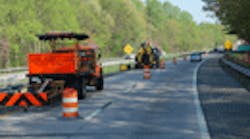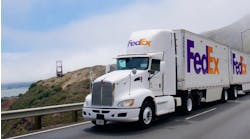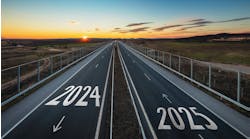State governments are being challenged to develop better transportation strategies And not just to handle expected growth in passenger and freight traffic, but also to jump-start economic expansion and job creation.
“One of the greatest challenges facing Illinois in the coming decades is how to use transportation investments and policies to strengthen our state’s economy,” said Donald Lubin, chairman of Chicago Metropolis 2020, a nonprofit civic organization created by The Commercial Club of Chicago in 1999.
“Nearly all of our population growth will occur in the state’s metropolitan areas, [with] residents working in a new and different economy that is dominated by services, tourism, logistics, finance, and information management industries,” he said in the introduction of a new report from the group, Building Our Economy: Transportation for a New Illinois.
“[That] will require a change from piecemeal [transportation] planning to integrated planning,” lubin stated. “It will require more rigorous economic evaluation of transportation investments and require policies that explicitly connect our transportation investments to the economy we aspire to create.
According to the Chicago Metropolis 2020 study, Illinois families and businesses spend $100 billion a year on personal and freight transportation. The group contends reducing these private costs could free up billions to meet family needs and make Illinois businesses healthier.
The group recommends several initiatives to help Illinois reshape its transportation focus, many of which would impact the freight market. They include:
- Cut government costs by consolidating into county governments the responsibility for building and maintaining roads and bridges in 1,403 townships.
- Create an Illinois Freight Authority to plan, fund and coordinate freight system improvements.
- Double the gas tax and reserve a portion of the new revenue for transit.
- Expand the use of tolling and variable pricing to better manage traffic and pay for needed improvements.
- Stimulate investment in freight centers throughout the state, including the development of intermodal cargo port facilities in southern Illinois.
The challenges facing states trying to craft such new transportation strategies, however, include dealing with aging infrastructure combined with shrinking finds for maintenance, much less expansion.
A report by the Connecticut Dept. of Transportation (CTDOT) published in June noted that the average age of the state’s highway bridges is about 50 years. Much of the state’s rail system is even more aged, with many rail bridges 100 years old. CTDOT noted about 6% of Connecticut’s highway bridges and 27% of its railway bridges – nearly 300 structures in all – are rated structurally deficient, with at least one major structural component, such as its deck or substructure, not capable of carrying all legal loads.
Continue reading "States urged to craft new transportation strategies"
The size and scope of transportation infrastructure states must manage is massive.. According to the Bureau of Transportation Statistics (BTS), there are over 4.04 million miles of public roads in the U.S., some 46,751 miles of interstate highways, 603,307 road bridges, 118,859 miles of Class I railroad track, 29,620 miles of inland waterways, and 5,178 public-use airport.
Even in a smaller state like Connecticut, state-owned transit infrastructure is formidable. According to CTDOT, the state owns approximately 3700 miles of highways, 3900 highway bridges, 230 miles of rail track, 200 railroad bridges, 270 rail cars, 650 buses, 6 airports, 20 million sq. ft. of airport pavement, one state pier, two ferries, and numerous buildings and facilities such as transit stations, highway garages, and highway rest stops.
Weather cycles add to the complexity of transportation management, the CTDOT added. Harsh winters cause pavements, structures, and vehicles to deteriorate faster thanks to salt applications to road and bridge surfaces and natural freeze-thaw cycles.
"Even maintaining what we have under such intense use and demanding conditions is straining our financial resources," said CTDOT in its report. "It leaves us little ability to improve our systems or expand capacity to meet growing demand."
Nearly 60% of Connecticut's highway pavement, about 2,200 miles, was found to be in less than good condition when inspected between 2006 and 2008, the report noted. Those highways serve 110,000 to 170,000 vehicles per day, with truck traffic representing 10% to 15% of that amount.
But it’s exactly for reasons like those that Chicago Metropolis 2020’s Lubin said states must forge new transportation strategies.
“Transportation is not an end in itself,” he stressed. “It is a means to a stronger economy and better communities. Too often we have chosen to spread money around rather than make strategic investments that strengthen the economy. We measure the number of bridges repaired or miles of road paved when we should be measuring the contribution to the gross state product or the number of permanent jobs created or the reduction in the amount of money families and businesses spend on transportation.”
Lubin added that such issues are not unique to Illinois and that is why the federal government and states must shift policies and practices.
“State economies are in a constant state of flux as they respond to new technologies, new laws, new politics and new markets,” he pointed out. “States that understand and respond strategically to these changes will be economically successful. Those that cling to old patterns and outdated expectations will fall behind as they defend an eroding status quo.”



